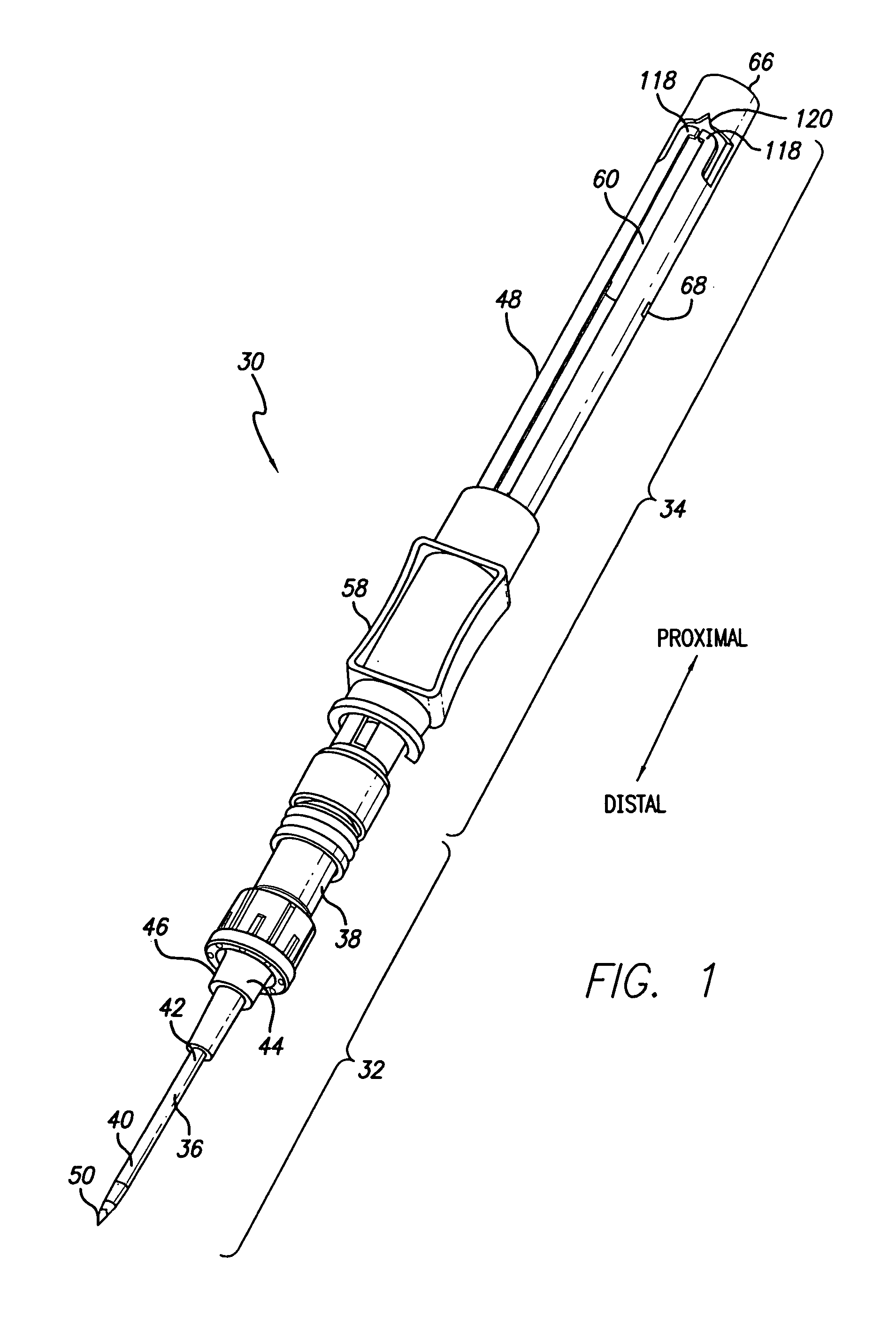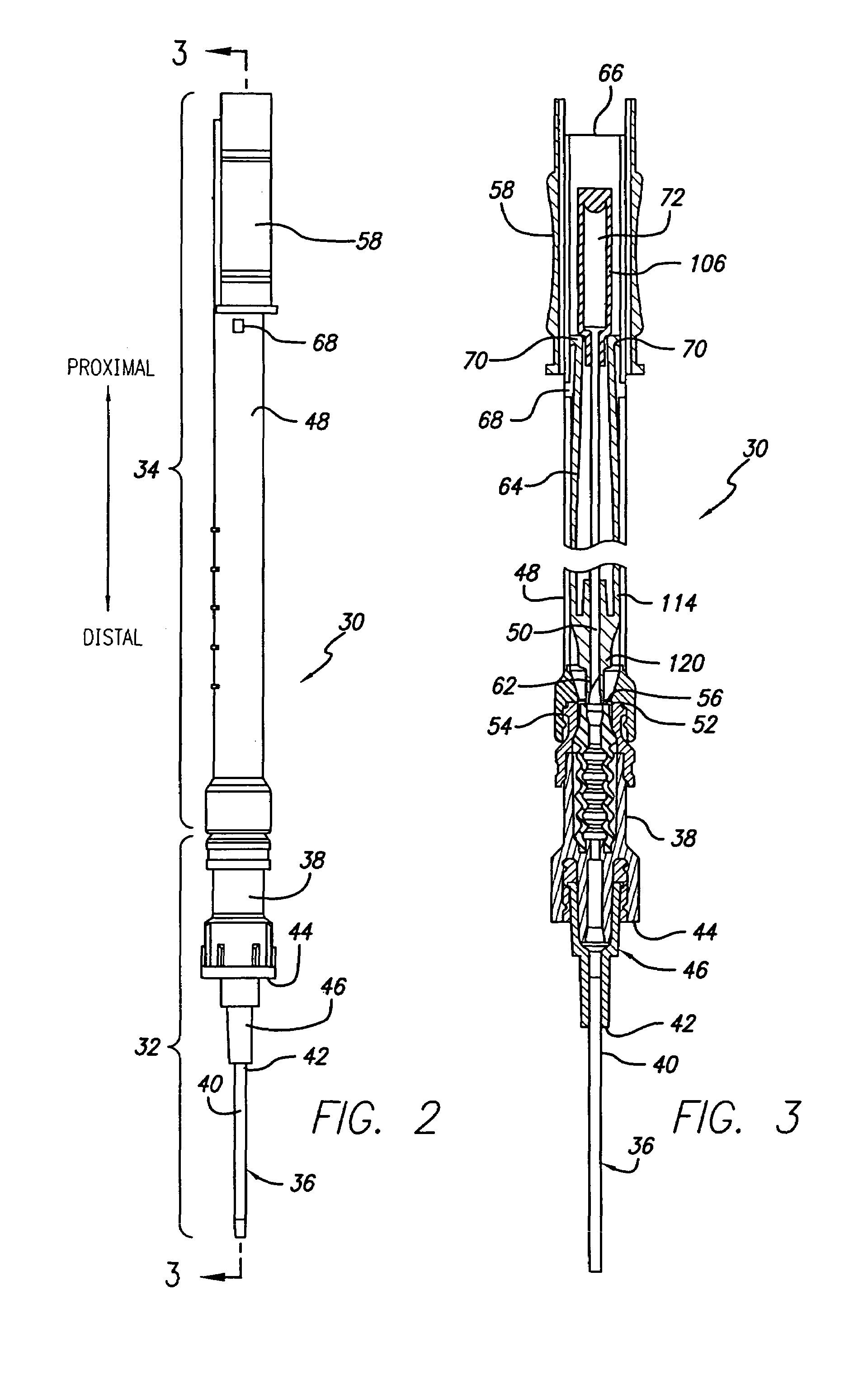Safety catheter system and method
a catheter and safety technology, applied in the field of intravenous catheters, can solve the problems of skin raising the possibility of infection, medical personnel may inadvertently puncture herself or herself, and the needle is extremely sharp, so as to reduce the possibility of operator being punctured with the sharp tip
- Summary
- Abstract
- Description
- Claims
- Application Information
AI Technical Summary
Benefits of technology
Problems solved by technology
Method used
Image
Examples
Embodiment Construction
[0039]Referring now to the drawings in which like reference numerals indicate like or similar elements among the several views, FIGS. 1, 2, and 3 show different views of an intravenous safety catheter insertion device 30 comprising a safety catheter device 32 to which is mounted an insertion mechanism 34. The safety catheter device 32 comprises a catheter 36 and a valved connector 38 mounted to the catheter. The catheter 36 is of a conventional type well known in the art, and comprises a soft flexible body or tube 40 made from plastic or silicone mounted at its proximal end 42 to the distal end 44 of the connector 38. In this embodiment, the catheter tube 40 is connected to the connector 38 with a female Luer adapter 46. The catheter tube 40 is generally between 19 mm (0.75 inches) and 31.75 mm (1.25 inches) in length and between 16 and 24 gauge in diameter, although other sizes may be used. The insertion mechanism 34 comprises a needle tube 48 within which is housed a sharp needle ...
PUM
 Login to View More
Login to View More Abstract
Description
Claims
Application Information
 Login to View More
Login to View More - R&D
- Intellectual Property
- Life Sciences
- Materials
- Tech Scout
- Unparalleled Data Quality
- Higher Quality Content
- 60% Fewer Hallucinations
Browse by: Latest US Patents, China's latest patents, Technical Efficacy Thesaurus, Application Domain, Technology Topic, Popular Technical Reports.
© 2025 PatSnap. All rights reserved.Legal|Privacy policy|Modern Slavery Act Transparency Statement|Sitemap|About US| Contact US: help@patsnap.com



